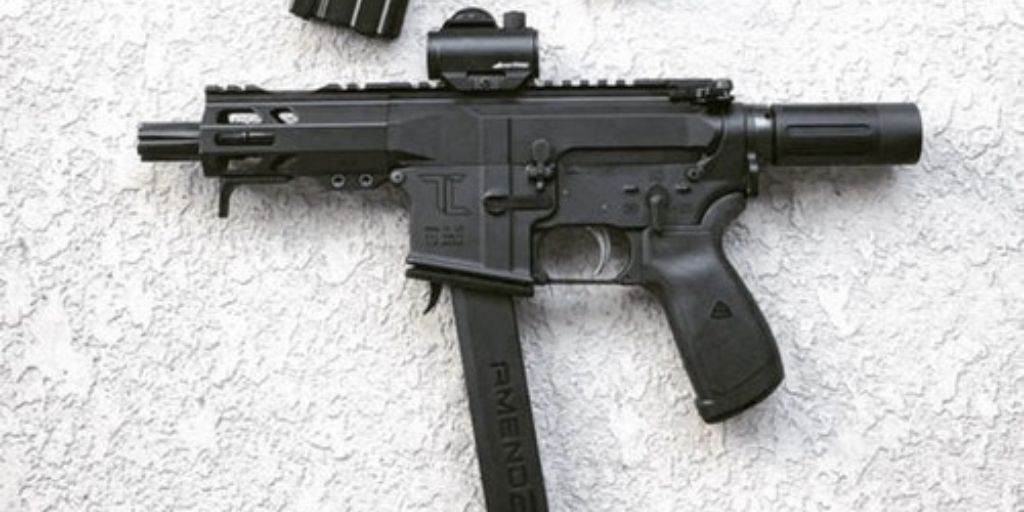
Complete, assembled uppers can be as different as two different cartridges. Sure, they might fundamentally all function in basically the same manner, but there are lots of features and specifications that can vary considerably between them.
Take, for instance, conventional rear-charging vs. side charging uppers, what sort of gas block the upper comes with, the bolt carrier group coating, and what’s on the muzzle.
These are just a few of the things to consider in an AR 15 upper. Some of these will be covered here.
Not All BCGs Are Created Equal
If your AR 15 upper comes with a bolt carrier group (not all do) and it’s a mil-spec BCG, that means that it has a hard phosphate coating.
A hard phosphate coating offers a few solid benefits. For one, it is cost-effective to produce and fairly low maintenance. Another thing is that it is non-reflective.
Beyond that, performance is average at best. There are other better bolt carrier group coatings, such as black nitride, titanium nitride, nickel boron, diamond-like carbon, and several others, all of which offer superior permanent dry lubricity than phosphate.
The benefit for you here is that the higher the permanent dry lubricity, the less liquid lubricant you need to use on the BCG, which is better for the rifle as liquid lubricant traps fouling, dust and other particulate matter.
You Should Never Use Your Rifle without a Muzzle Device or Thread Protectors Installed
If your AR 15 upper comes with a threaded barrel (and most do) chances are it also comes with a flash hider.
If you don’t like that flash hider, do not take it off and fire the rifle without installing thread protectors.
Basically, a thread protector is just a cap that screws onto the muzzle threads, but you should never operate a threaded barrel without them (or a muzzle device) installed.
This is because the muzzle threads are fragile. If you damage them, there’s no going back, so take no chances and always install a thread protector if you’re not running another muzzle device.
You Don’t Need to Mess with the Gas System to Adjust Cyclic Rate and Recoil
Lastly, while some rifles come with adjustable gas blocks, there’s an easier and less invasive way to adjust rifle cycling, recoil and performance, that doesn’t involve the gas system at all.
It’s the buffer system, housed within the buffer tube. For rifles that are sluggish cyclers, lowering the buffer weight can improve cycling and performance. For those that are kicking a bit hard, upping the buffer weight or the strength of the spring (or both) can soften recoil and result in a smoother-shooting rifle.
That’s not technically part of the upper, but the gas system is so it was worth mentioning.
Not All AR 15 Uppers Have Ejection Port Covers
Let alone the fact that some assembled uppers just don’t come with them. There are upper configurations that entirely lack ejection port covers.
Take, for instance, side-charging uppers. The nature of a side-charger more or less eliminates the ejection port cover as a part, because of how the charging handle interfaces with the bolt.
So don’t look too far if your AR 15 upper doesn’t come with it. You might not need it to begin with.
Here for a Complete AR 15 Upper?
For those of you in the running for a complete AR 15 upper for your next build, check out what’s available online at MCS Gearup. They carry a wide range of assembled uppers along with all the parts you need to complete a functioning rifle. Bookmark their page and put it in rotation whenever you need parts for a rifle.
For more information about Pistol Braces and Buffer Tube Please visit: MCS Gearup.